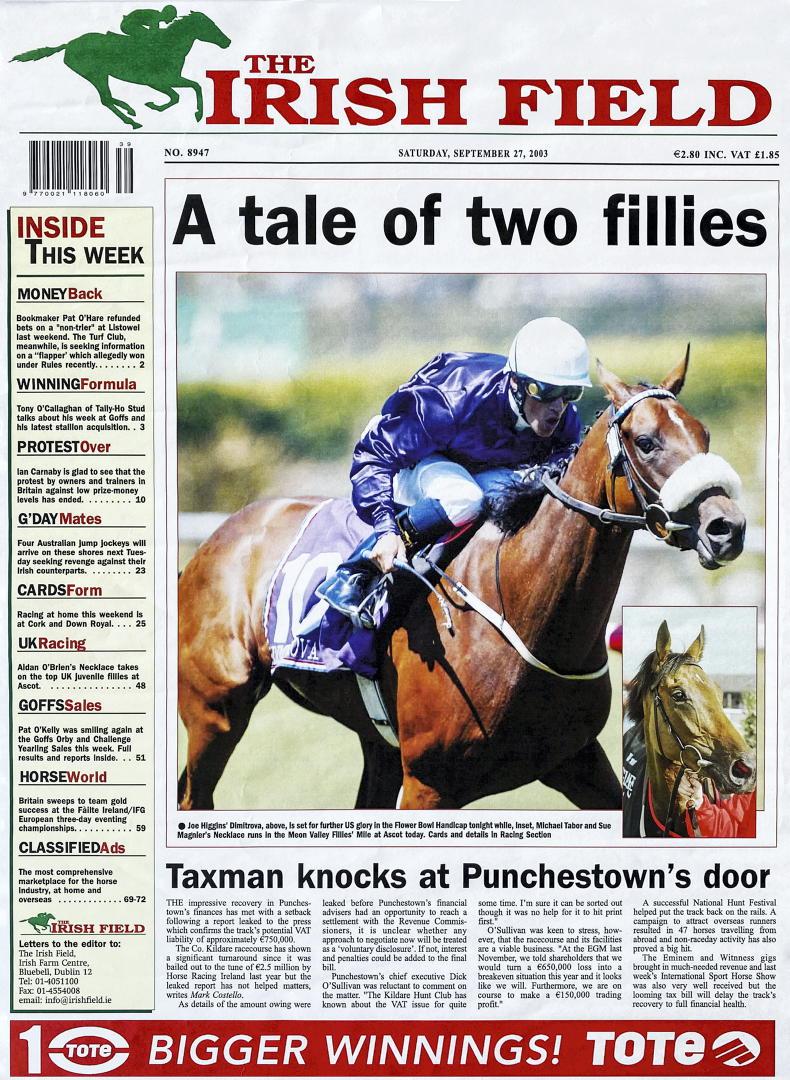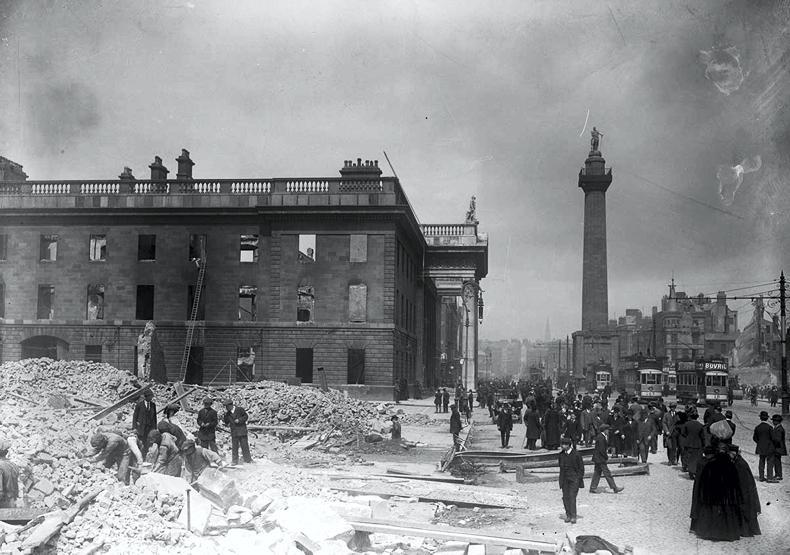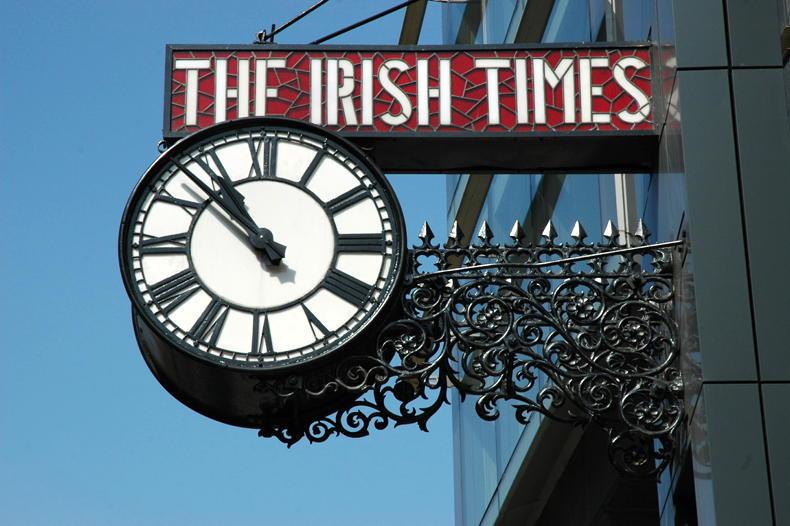Today we celebrate our 10,000th edition of The Irish Field, first published on February 19th, 1870, as the Irish Sportsman and Farmer. We have only two seniors in Irish newspaper publishing, The Irish Times and the Irish Examiner. Having survived the peaks and troughs along the way, we can claim weekly readership of more than 70,000.
We pay a posthumous tribute to our founder, William Dunbar, a Cavan man and classics scholar of Trinity College, known to all and sundry as ‘The Governor’.
Two factors determined him in this course of action. He was a sports enthusiast, his forte being coursing, and his resentment of the virtually non-existent coverage of Irish sport by the English press.
Publication was scheduled for Friday, in time to make the provincial post. The paper was based in the offices of James Charles, 61 Middle Abbey Street, Dublin, also the production point for the Church of Ireland Gazette.
The political upheaval caused in Ireland by William Gladstone’s Landlord and Tenant Act prompted Dunbar to drop ‘Farmer’ from the title, which otherwise remained until 1894. Sports in the diverse publication included hurling, polo and billiards.
Nationalist image
Within a year, Dunbar had moved his offices and printing works to 13 Upper Sackville Street (O’Connell Street nowadays). As part of the paper’s robust nationalist image many of the contributors adopted Irish by-lines, notably the writer responsible for covering English racing, who wrote as ‘Erin Go Bragh’ – Ireland forever!
William Dunbar died in 1881, and ownership passing to his widow Mary. She was thereby unique as a female editor of an Irish sporting paper in the 19th century.

One of Mary’s economies saw her move office to her home at 36 North Great George’s Street. Sadly, failing health forced Mary to sell her newspaper to a limited company.
Its chairman was Sir Arthur Brooke, a son of Viscount Brooke of Tyrone. New premises were acquired, at 59 Middle Abbey Street, adjacent to its original home. There followed a difficult couple of years, in which the Irish Sportsman came perilously close to bankruptcy.
Mercifully, a ‘white knight’ appeared in 1894 in the form of 26-year-old doctor and businessman Frederick Faber MacCabe (1868-1954).
Styling himself Managing Director, ‘Freddie’ MacCabe revamped the ailing weekly, giving it the title The Irish Field and Gentleman’s Gazette, effective from its publication on November 24th, 1894. Incidentally, the final issue to bear that title was published on February 18th, 1933, virtually the anniversary of its first appearance – February 19th, 1870.
Described as a journal “written by gentlemen for gentlemen”, it carried a wide variety of stories, notably one from a northern police court, where a man stood trial for beating his wife with a poker. On being sentenced and asked if he could offer any mitigating circumstance, the defendant replied: “Faith there is yer honour, sure the pokes wasn’t hot”.
Orby connection
Said to have been caught up in a shares scandal, ‘Freddie’ MacCabe resigned in 1898. In fact he responded to the urgent appeal for surgeons to take the field in the South African War, which saw him head out there with the South Irish Horse.
When the Boers surrendered in 1902 ‘Freddie’ returned to his Sandyford base. From there he supervised his neighbour ‘Boss’ Croker’s Orby to make history by becoming the first Irish-trained winner of the Epsom Derby in 1907. MacCabe’s memoirs leave no doubt that training the colt was child’s play, compared to cajoling the owner.
Freddie MacCabe was succeeded as managing editor by W. A. McLachan, head office now being 27 Dame Street. An ardent Royalist, McLachan introduced a new feature by Nannie Power O’Donoghue entitled A Gentlewoman’s Guide, covering such topics as gymkhanas, music, literature and fashion.

As a Royalist, on Edward VII’s accession to the throne in 1901 McLachan composed an open letter to his monarch proposing that the king send his 1900 Derby and Triple Crown winner, Diamond Jubilee to stand at stud in Ireland as a ‘gesture of goodwill’. His words fell on deaf ears. Retired to the royal Sandringham Stud, Diamond Jubilee was subsequently sold to Argentina in 1906, where he proved very successful.
The Irish Times
A notable turning point in our newspaper’s history occurred in 1903 when it was purchased, on behalf of The Irish Times, by its chairman and managing director, Sir John Alexander Arnott Bt. and moved to 11 D’Olier Street. The timing was propitious, for our paper was facing bankruptcy, for the third time in 10 years. His fellow directors, on learning of their £250 acquisition were less than impressed. However, they could hardly question their chairman’s commercial judgement, given he was proprietor of Arnott’s stores and founder of Phoenix Park racecourse.
Following the momentous upheaval of Easter Monday 1916 in our capital city, our newspaper failed to appear for two weeks, a rare interruption in its life story. When it did reappear on April 22nd, 1916, it incorporated the following apologia.

“It is scarcely necessary to explain the non-publication of The Irish Field for the last two weeks, which was attributable to the rebellion which burst out in Dublin on Easter Monday, and short-lived as the insurrection was it suffered to cause much dislocation in the sporting as well as the general life of the country that the production of a newspaper was a matter of extreme difficulty.”
Apropos racing in this country, it effectively ended after the Easter Monday meetings at Fairyhouse and Cork Park, followed by a one-day fixture at Newcastle West on the Wednesday.
With martial law declared throughout the island, racing was not sanctioned to resume until Leopardstown, Friday, June 9th, 1916. Moreover, the commandeering of all railroad transport for military use resulted in the Irish Grand National winner, All Sorts, taking two days and nights to reach his stable in trainer R.G. ‘Dick’ Cleary’s Streamstown, Co Westmeath, establishment.
Canine news
1931 saw the purchase of the ‘Irish Kennel Club Calendar and Studbook’, resulting in non-sporting stories being replaced by canine news. In 1933 the title was once again abbreviated to ‘The Irish Field’. On the staff at this time was one Wilfred Brambell, destined to achieve renown as the famous Steptoe in the BBC’s long-running television series Steptoe and Son.
Though long a tabloid newspaper, our journal was reduced to a single broadsheet page in 1942, a wartime stringency.
Nonetheless, it continued to encompass racing, yachting, golf, cricket and League of Ireland soccer, besides carrying a goodly array of advertisements. De Valera’s Irish Free State of course remained steadfastly neutral throughout the conflict. The true extent of our contribution to the Allies’ war effort remains to be told, whenever.
Not until 1958 did our weekly revert to its traditional tabloid format. By then the editor in charge, Sydney Robins, gave prominence – other than horseracing – to rugby, reports often taking precedence over racing.
That all changed in 1970 when the colourful, charismatic Valentine Lamb took over the editor’s chair. While it struck many as a peculiar career move for the former financial editor of the mother paper, The Irish Times, it was one that Val took to with crusading gusto.
He and reporter Dave Baker set out to reform the ‘service’ that Irish racecourses had served up to their loyal, uncomplaining clientele ad infinitum.
No detail was too small or insignificant to escape their notice. In the days when racecourse proprietors depended entirely on gate money, they had no choice but to take heed. Racegoers were forever indebted to Messrs Lamb and Baker.
Val Lamb only relinquished his favourite occupation on the sale of our journal in 2003 to the Agricultural Trust, publishers of the Irish Farmers Journal.
Matt Dempsey was CEO of the Agricultural Trust at the time of the acquisition. He head-hunted Leo Powell from Goffs to become The Irish Field editor, assisted by Mark Costello, a senior racing journalist, as Deputy Editor.
Overnight, The Field became a full-colour publication, and the injection of new blood and ideas – coinciding with the best of the Celtic Tiger years – saw the new owners at the Agricultural Trust quickly recoup their bargain purchase price.
Diversification
Looking down the road, anticipating coverage of day-to-day racing becoming increasingly digital, management embarked on a diversification programme, whereby our newspaper covered every aspect of the horse in Ireland and added more practical information for horse owners, echoing the policy of the Irish Farmers Journal.
Fully a quarter of our weekly issue is devoted to equestrian sport in the Irish Horse World section. In 2023, after 20 years as editor, Leo Powell handed the torch to Mark Costello.
In 2020, we celebrated our 150th anniversary in our latest home, the Irish Farm Centre. Now it is time to mark our 10,000th issue. We hope you – our loyal readers – will join us in spirit, if not spirits!




 This is a subscriber-only article
This is a subscriber-only article
 It looks like you're browsing in private mode
It looks like you're browsing in private mode








SHARING OPTIONS: